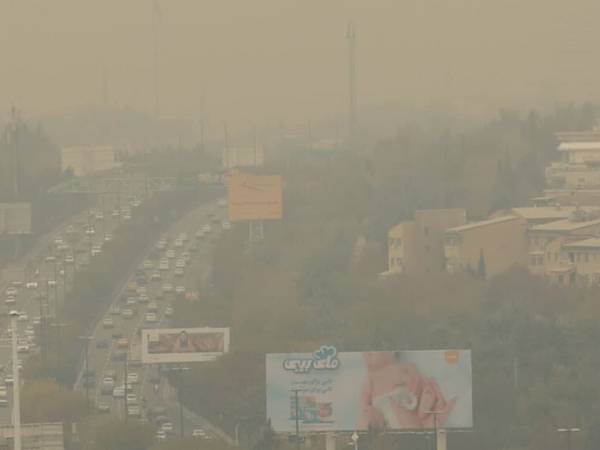Iranians are caught in an economic and environmental catch-22 as a fuel shortage is paradoxically coinciding with an uptick in polluting greenhouse gas emissions which by the government's own admission has killed tens of thousands of people.
The dual crisis has become so severe that schools across Iran have been forced to close for 24 days in the past three months. Government offices and businesses are faring no better.
“Iran loses approximately 50,000 lives annually due to air pollution. This is the human cost of air pollution," Iran’s Health Minister Mohammadreza Zafarghandi announced.
The financial cost of air pollution in Iran is at least $12 billion annually, he added, a figure that some estimates say could rise to $20 billion.
These vast human and financial costs come alongside a significant reduction in the domestic use of cleaner fossil fuels which are set aside for profitable export abroad.
Meanwhile, Iran has ramped up the consumption of highly polluting fuels like mazut, or heavy fuel oil.
In the absence of official statistics, Iran International has found evidence that Tehran has significantly increased its exports of cleaner fuels such as natural gas, liquefied petroleum gas (LPG), and kerosene while sharply increasing domestic consumption of highly polluting fuels like mazut.
The latest statistics from Turkey’s Energy Market Regulatory Authority show that in the first 11 months of last year, Turkey increased gas imports from Iran by 40%, reaching nearly 6.5 billion cubic meters. Iran also exports gas to Iraq, though no official figures on the volume are available.
Natural gas is the cleanest fossil fuel, followed by LPG (a combination of propane and butane).
Data from energy consultancy Kpler obtained by Iran International shows Iran’s LPG exports have grown significantly over the past four years, peaking at 337,000 barrels per day in 2024 or more than double the amount exported in 2020.
Radio Farda recently published a report citing a confidential Ministry of Petroleum document indicating Iran has also increased kerosene exports while nearly halving its domestic consumption.
The same document indicates that domestic mazut consumption in the first seven months of current fiscal year beginning in late March last year rose by over half compared to the same period last year.
In contrast, Iran’s exports of mazut - the most polluting fossil fuel - have been on a consistent downward trend in recent years while domestic use has surged.
Kpler data seen by Iran International shows Iran exported an average of 232,000 barrels per day of mazut last year—a 42% drop compared to 2021.
Iran has reduced its mazut exports because the mazut it produces contains 3.5% sulfur—seven times higher than the standard required for marine fuel. This high sulfur content has created significant challenges for exporting the fuel.
If Iran halted the export of cleaner fuels like natural gas or LPG, there would be no need to rely on mazut domestically, and diesel consumption would also halve.
Currently, Iran consumes around 700,000 barrels of diesel and 780,000 barrels of gasoline daily.
Greenhouse gas emissions up
According to the latest data from the Global Carbon Project, Iran’s greenhouse gas emissions in 2023 reached about 818 million tons, marking a 10% increase since 2020, a rise by nearly half since 2010 and a staggering 155% surge since 2000.
Globally, despite its relatively middling population size, Iran is the six biggest emitter of greenhouse gas.
Natural gas accounts for 70% of Iran’s energy consumption and over the past decade, Iran’s gas production and consumption grew by more than 5% annually.
However in recent years this growth has plummeted to just 2%, and the International Energy Agency reported in January that it dropped below 2% last year and was expected to shrink to just 1% in 2025.
Despite slowing gas production and mounting shortages, President Masoud Pezeshkian’s government has allocated the export of 16 billion cubic meters of gas in the upcoming fiscal year, or nearly double the amount for the target this year.
